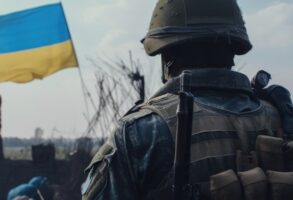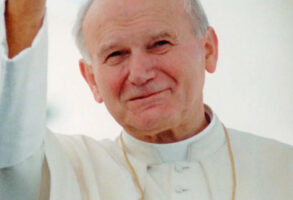
Published April 5, 2022
When Soviet Russia, then an ally of Nazi Germany, invaded Poland on September 17, 1939, it quickly helped complete the vivisection of the Second Poland Republic, which disappeared from the map of Europe, its eastern parts being absorbed into the USSR.
In addition to considerable territory, Soviet troops captured some 8,000 Polish military officers, all educated professionals serving in reserve units, who ought to have been treated as prisoners of war under the Geneva Conventions. In addition, the Soviet occupation of eastern Poland netted some 6,000 Polish police officers and 8,000 members of the Polish intelligentsia, all of whom were imprisoned in camps. Soviet dictator Josef Stalin, knowing that these men constituted an elite whose work would be essential to rebuilding an independent, democratic Poland after the Second World War, deemed them a “threat” to the USSR. So he dealt with them in a singularly brutal way in April and May 1940. They were massacred, some 23,000 of them: one by one, each shot in the back of the head, his hands having been previously tied behind his back.
While the Russian mass murder of Polish officers and intellectuals took place in several locations, these executions are referred to as the Katyn massacres for the Russian forest where many of the shootings took place, the victims’ bodies being dumped into mass graves. Stalin lied about all of this, of course, assuring Polish General Władysław Anders, who was gathering an army to fight the Germans after their invasion of the USSR in June 1941, and the prime minister of the Polish government-in-exile, General Władysław Sikorski, that all Polish officers captured by the Red Army had been freed, even though the Soviets had “lost track” of some (they were said to be somewhere in Manchuria).
In late 1942 and early 1943, German forces discovered the mass graves of Polish officers in the Katyn Forest and reported their discoveries to Berlin. The Soviets continued to prevaricate, claiming that the massacres had in fact been carried out by the “German-Fascist hangmen”. When prime minister Sikorski demanded that the sites be investigated by the International Red Cross, Stalin upped the ante of prevarication, accused the Poles of collaborating with the Nazis, and broke off diplomatic relations with the London-based Polish government-in-exile.
The Soviet secret intelligence service, the NKVD, then proceeded to try and cover up the massacres it had carried out. Soviet propaganda continued to insist that the murdered Poles were German victims: lies that were swallowed by some gullible Americans. The American and British governments, loathe to annoy “Uncle Joe” Stalin, did not press the case – a reticence that continued at the Nuremberg trials in 1946.
Blatant falsehoods and disinformation about the Katyn massacres continued for decades, and secret police records were destroyed to further cover-up the fact that these mass murders have been solely a Soviet project. Yet a 1959 letter from the head of the KGB (successor of the NKVD) to Soviet premier Nikita Khrushchev, detailing the execution of tens of thousands of Polish officers, somehow survived. Finally, in 1990, Soviet leader Mikhail Gorbachev admitted Soviet and NKVD responsibility for the murders. Documentation on the massacres that had not gone up the smokestack in the destruction of NKVD records was given to post-communist Polish officials and scholars, and the Katyn catastrophe has now been thoroughly documented.
Today, it would be hard to find a Polish town that does not have a Katyn memorial; major cities have several. And many Polish churches have plaques commemorating the victims, with the Virgin Mary cradling a Polish officer, in the back of whose head is an unmistakable bullet hole.
If all of this seems alarmingly familiar, it is because the template for this wicked combination of murder and lies is being replicated today. The Russian invasion of Ukraine has been justified as a defense of Russian national security, just as Stalin’s absorption of Poland and summary execution of more than 20,000 future leaders of an independent Poland was deemed essential to Russian security. The exact same kind of barbarism displayed by the NKVD in 1940 has been on display in the actions of Russian troops over the past five weeks. And the same Stalinist methods of lying and spewing disinformation have been deployed anew by Vladimir Putin, his foreign minister Sergey Lavrov, and the evidently shameless Russian ambassador to the United Nations, Vasily Nebenzya.
Ukrainian civilians, including old men, have been shot in the back of the head after their hands were tied behind their backs, their bodies left on the streets in Bucha, a town near Kyiv. Mass graves have been uncovered after Russian troops retreated from areas they previously held. Russian propaganda blames these war-crimes on the Ukrainians they regularly dub “Nazis,” adding the refinement of doctored videos on social media to their armamentarium of dissembling. (These clumsy efforts have been thoroughly discredited by the BBC and other media not known, before February 24th’s Russian invasion, of being particularly hard on Russia and its president). The gullible of 2022 swallow these exercises in mendacity, just as the gullible did in the 1940s and beyond.
The brutality of Russian troops in Ukraine bespeaks a deeply wounded political culture, as does the pathological lying of Russian leaders. Yet as the Bucha massacres were being graphically displayed to a shocked world, the slim hope in some quarters, which seem to include the Vatican, that the leadership of Russian Orthodoxy might help heal those sicknesses was further dashed.
On April 3, Patriarch Kirill of Moscow and All ‘Rus celebrated the Divine Liturgy in Resurrection Cathedral, the principal church of the Russian military. There, he attempted once again to explain Russian actions in Ukraine as a defense of the “Fatherland,” against the “colossal influence of one force…which opposes the force of our people.” The patriarch then made matters worse by opining that, while “we have no desire for war or doing something that could harm others,” Russians would rally to their country’s defense “in the way that only Russians can defend their country.”
As they did in Katyn in 1940. As they have done in 2022 in Bucha, in the now-destroyed city of Mariupol’, and elsewhere throughout Ukraine.
The souls of the victims of the Katyn Forest massacres must be weeping. What happened to them is happening again. Or as William Faulkner once put it, “The past isn’t dead. It isn’t even past.”
George Weigel is Distinguished Senior Fellow of Washington’s Ethics and Public Policy Center, where he holds the William E. Simon Chair in Catholic Studies. He is the author of over twenty books, including Witness to Hope: The Biography of Pope John Paul II (1999), The End and the Beginning: Pope John Paul II—The Victory of Freedom, the Last Years, the Legacy (2010), and The Irony of Modern Catholic History: How the Church Rediscovered Itself and Challenged the Modern World to Reform. His most recent books are The Next Pope: The Office of Peter and a Church in Mission (2020), and Not Forgotten: Elegies for, and Reminiscences of, a Diverse Cast of Characters, Most of Them Admirable (Ignatius, 2021).
George Weigel, Distinguished Senior Fellow of the Ethics and Public Policy Center, is a Catholic theologian and one of America’s leading public intellectuals. He holds EPPC’s William E. Simon Chair in Catholic Studies.








